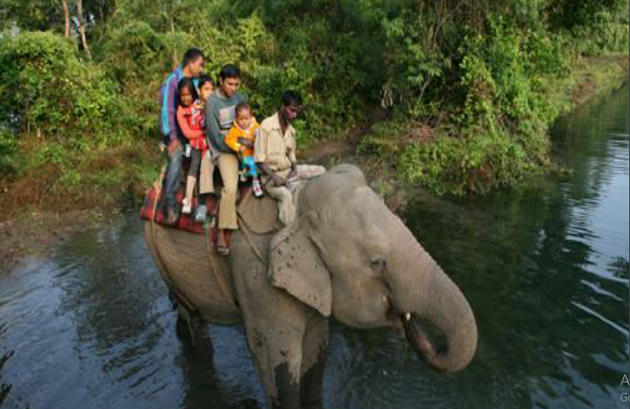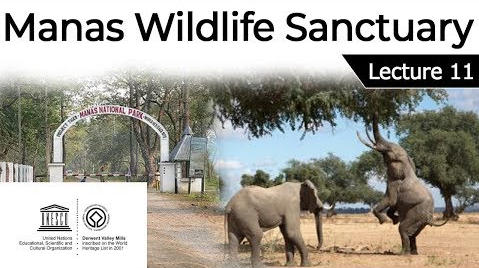Table of Contents
INDIA

MANAS
- Manas Wildlife Sanctuary is located at the base of foot hills of the Bhutan-Himalayas in the state of Assam. It is famous for unique biodiversity and landscape.
- Manas is the first reserve included in the network of tiger reserve under Project tiger in 1973. The Manas Wildlife Sanctuary was tagged as World Heritage Site in 1985.
- In 1989, Manas acquired the status of a Biosphere reserve. It extends over an area of 2837 Sq. Km from Sankosh River in the west to Dhansiri River in the east.
FACTS
- This park is famous for its rare and endangered endemic wildlife such as the Assam Roofed Turtle, Hispid Hare, Golden Langur and Pygmy Hog. Manas is famous for its population of the Wild water buffalo.
- Manas Tiger Reserve lies alongside the shifting river channels of the Manas River. The name of the park is originated from the Manas River, which is named after the serpent goddess Manasa.
- The Manas river is a major tributary of Brahmaputra River, which passes through the heart of the national park.
FACTS
- There is only one forest village, Pagrang, in the core of the national park. Apart from this village 56 more villages surround the park. Many more fringe villages are directly or indirectly dependent on the park.
- The park area falls in two districts: Chirang and Baksa in the state of Assam in India.
- The park is divided into three ranges. The western range is based at Panbari, the central at Bansbari near Barpeta Road, and the eastern at Bhuiyapara near Pathsala.
FACTS
- The sanctuary has recorded 55 species of mammals, 380 species of birds, 50 of reptiles, and 3 species of amphibians. Out of these wildlife, 21 mammals are India’s Schedule I mammals and 31 of them are threatened.
- The fauna of the sanctuary include Indian elephants, Indian rhinoceros, gaurs, Asian water buffaloes, barasingha, Indian tigers, Indian leopards, clouded leopards, Asian golden cats, dholes, capped langurs, golden langurs, Assamese macaques, slow loris, hoolock gibbons, smooth-coated otters, sloth bears, barking deers, hog deers, black panthers, sambar deers and chitals.
FACTS
- Vegetation: The monsoon forests of Manas lie in the Brahmaputra Valley semi-evergreen forests ecoregion. The combination of Sub-Himalayan Bhabar Terai formation with riverine succession leading up to the Himalayan subtropical broadleaf forests makes it one of the richest biodiversity areas in the world. . A total of 543 plants species have been recorded from the core zone
- Sub-Himalayan Light Alluvial Semi-Evergreen forests in the northern parts.
- East Himalayan mixed Moist and Dry Deciduous forests (the most common type)
- Low Alluvial Savanna Woodland, and
- Assam Valley Semi-Evergreen Alluvial Grasslands which cover almost 50% of the park.
FACTS
- BY AIR
Nearest Airport is Guwahati (180 kms / 5 hrs drive approx.).
- BY ROAD
Manas is 176 kms from Guwahati. The journey from Guwahati by road is 5 hrs. Approx.
Other road distances to Manas are:
Siliguri to Musa, Manas: 326 Km
Bagdogra to Musa, Manas: 335 Km
Kaziranga to Musa, Manas: 401 Km
- BY RAIL
Guwahati is gateway to the North East India. All major cities of India are well connected to Guwahati including Rajdhani Express.

MANAS
























 WhatsApp
WhatsApp